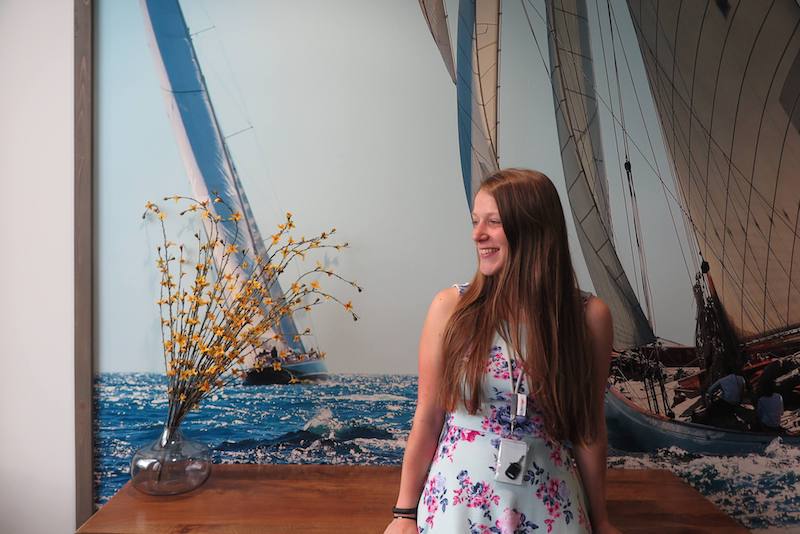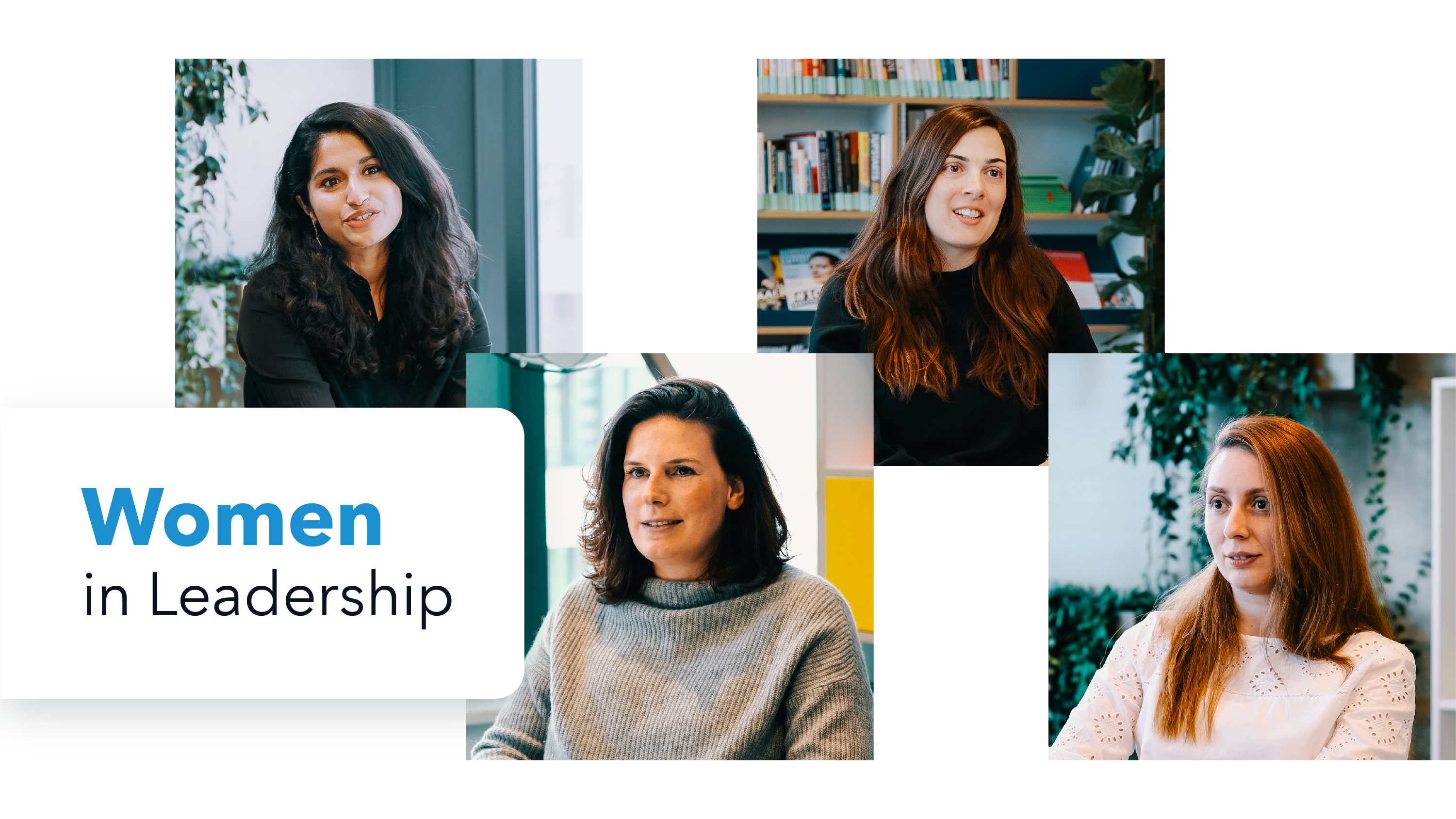Humans
The subtle art of giving feedback: Meet Stefanie Stakenburg
Feedback is the basis for improvement. In theory, we all want to know when we’re doing things right so we can keep doing them and when we’re making mistakes so we can learn from them. In practice, we’re all human, and we like being praised as much as we dislike being criticised. Therefore, the way feedback is delivered is crucial.
Feedback done in the right way and with the right intentions (even when negative), can lead to outstanding performance. However, poorly delivered feedback can confuse at its best and can lead to resentment and revenge at its worst. At trivago we’re always encouraged to give feedback, but it’s a subtle and complicated art that takes a real effort and experience to master.
Fortunately, some people are working really hard to help us improving. We caught up for a chat with Stefanie Stakenburg, the creator of “Project Feedback”.
Life at trivago: Hey Stefanie! Can you explain “Project Feedback” to us in a nutshell?
Stefanie Stakenburg: Sure! It’s a self-managed video workshop on feedback, to improve how feedback is given and received, focusing on metrics such as frequency and quality of feedback. The goal is to create a culture of open and honest feedback and communication, ensuring that each individual is able to receive the most useful feedback in the best way, through team collaboration.
Lat: How is the workshop structured to achieve this ambitious goal?
S: The workshop is delivered with a video, so teams are always free to self-initiate it without any dependencies. Also, not having external moderators can be helpful for the team, creating an environment of trust and understanding. The workshop is structured in a way that gives room for everyone to participate and discuss. To elaborate a bit more, the workshop has “educational” sections based on scientific research and interactive parts. In the interactive parts is where teams can compare their current feedback structure and look at how it can be changed to take each other’s feedback preferences into account.
Lat: How did you come up with the idea of creating a workshop about how to improve feedback?
S: I’m honestly really passionate about this topic! I was writing my Master’s thesis about it when I started at trivago, and when I presented the findings to my colleagues everybody was excited. After finishing the thesis I began as a project manager in “Team Development”. I noticed that there was room for improvement on how we deliver feedback. At that point, it was just a match made in heaven between what I was most passionate about and what people wanted to improve!
Lat: An idea born under a lucky star then! And how has this video workshop come to life?
S: My idea was creating something to help people improve the way they give and receive feedback in their own teams. I wasn’t actually thinking about creating a workshop or how the “end product” would look like. In order for this idea to come alive, I created a project roadmap and I accounted for some time to really understand what the best format could be.
Due to the nature of the project, I always tried to have people involved, asking their preferences on this topic. I had chats, interviews, and then more structured case studies, to grasp what people needed to enhance their feedback skills. After all these steps, it became clear what was lacking in the department and how I could fill this gap. That’s how the idea of a video workshop came to be.
Lat: So you said that you came up with a project roadmap for this workshop. Has the roadmap been followed completely or did you also make changes?
S: [Laughing] It changed tremendously. The phase that took longer than expected was the interview process with people to set expectations and gather their thoughts on how a feedback workshop could look like. I’m honestly really grateful for the extra time I dedicated on that though because it gave me better ideas on what people really needed. In general, I can say that I tried to be very agile, iterating when needed and aimed for an MVP approach at the beginning.
Lat: So how did you come up with the first MVP and how much did you change in the first iteration?
S: The script for the video had already been finalised after a lot of feedback from my team. However, for the actual workshop, I preferred to receive practical feedback on an MVP version before finalising the format. Instead of animating it and spending too much time on the design, I created a PowerPoint which was then screen and audio recorded. The key point here is that the focus was not on having a pretty layout and visuals or high-quality sound, but on getting the main idea out there for a team to trial it and to gather feedback as quickly as possible.
Once it was tested I was able to implement a lot of constructive criticism and got to know the key strengths and weaknesses of the workshop. For instance, at a certain point in the workshop, a graph is generated, but the team struggled with reading it so I had to change it. I incorporated the vast majority of the feedback that people gave me, trying to find a good balance between the vision I had for the workshop and what was really important for people to get the most out of this experience.
Lat: And how was it for you to be there when people attended the MVP version of the workshop?
S: [Laughing] The MVP presentation was actually cringy to watch, especially hearing myself in the recording. I recorded it with the XBOX app, while talking and simultaneously changing the slides manually on a PowerPoint presentation!
Though, considering the workshop itself rather than just the presentation, it was mostly a very exciting experience. When the team attended the workshop, the idea I had at the beginning was finally not just a plan in my head anymore but something tangible that achieved the desired effect. Attending the workshop sparked conversation within the team, and that was my primary goal: enable people to communicate better, give and receive better feedback and walk away with action points that are useful and effective.
Lat: How is the workshop now that you‘ve had the chance to refine and iterate it?
S: Implementing the feedback was relatively easy. The final product is finally here however, it took more time than expected to really get it to the quality I wanted it to be audio and visually. Attending the first non-MVP version of the workshop was very exciting, it went quite smooth and the second team was very happy about it. I’d say the goal has been reached.
Lat: How has the feedback been on the workshop so far?
S: People feel it’s actionable and useful, and it gives a series of best practices that are tailored for different kinds of teams. Both of the workshops I attended ended with action points that were then applied in practice. For instance, one team lead took the points in one-to-one meetings, one whole team is now aware of how to phrase their feedback during retrospectives, and so on. In general, both of the teams said that the workshop fostered great discussions and increased the willingness to take action.
I’ll attend one more workshop to see if there’s a need to improve the visual side more, other than that I’ll always be reachable for feedback and improvement. The key is that the teams should be able to be independent from now on.
Lat: What was the biggest challenge in this project for you? What did you learn?
S: I tend to be quite harsh on myself regarding my job, and I like to curate every single detail of my work. Therefore, having a presentation that was fully usable but not polished for the MVP was quite hard for me. But I learned a lot using the MVP approach. It taught me how to break down projects in a more efficient way, keeping things organised without overly planning. Also, I learned how to use Adobe Creative Suite which was really rewarding. Last but not least, I learned that I was the one stressing myself out the most, my team has been of huge help and really supported me during the entire process.
Lat: As a feedback expert, what has been the best and worst feedback you’ve ever received?
S: Well, good feedback to me is when it’s done in a timely manner, this way I can fully understand what the feedback is about and still act upon it. It should also be a mix of praise, criticism and concrete examples about how to improve. I also like people that give feedback in a form of a question or a suggestion. Like: “Have you thought about this….?”.
Contrary, not useful feedback is something that is not relevant anymore or is simply an opinion like: “I don’t like this”, without giving examples and suggestions for improvement. This type of feedback makes me feel like the person that is giving me feedback didn’t even pay attention to what I did or said.
Lat: And last but not least, if you can give yourself feedback, what would it be?
S: Don’t stress yourself out so much. Calm down, everything is going to be fine, you’re more capable than you think you are. It’s a piece of feedback I’d give anyone, not just to myself!



